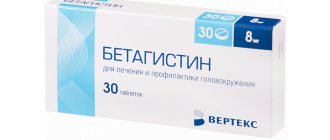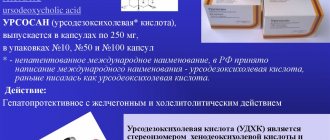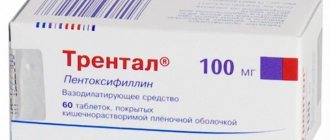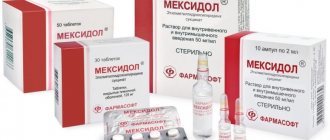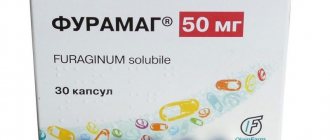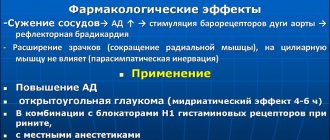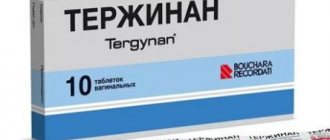Has restrictions during pregnancy
Prohibited during breastfeeding
Prohibited for children
Allowed for older people
Allowed for liver problems
Allowed for kidney problems
Betaserc is a histaminergic drug that acts on the nerve fibers of the system and affects the H3 receptor of the vestibular peripheral nerve. The drug normalizes the conduction of impulses in the vestibular receptor in parts of the brain. The result of this effect is a decrease in dizziness and severe nausea, the absence of vomiting and a decrease in extraneous sounds in the ears.
Mechanism of action of Betaserc
Betaserc is an American-made drug that is an antagonist of the H1 and NZ receptors of the vestibular nucleus of the nervous system centers. The drug restores the functionality of the vestibular center after undergoing neurectomy. Reduces the severity of symptoms in Vertigo pathology and Meniere's syndrome.
The medication is used for Meniere's syndrome with severe symptoms:
- dizziness, which leads to severe nausea and vomiting;
- decreased hearing quality;
- extraneous noise in the ears;
- vertigo.
Contraindications for use in therapy are an allergy to the components in the drug, as well as age under 18 years due to the unknown danger of the drug in children.
The cheapest similar products
Analogues from domestic manufacturing companies are several times cheaper than the original and its foreign analogues, but they do not differ in quality and efficiency. A list of cheap analogues of Betaserc is presented below.
Betaver
Betaver - a medication with the active component betahistine is an angioprotector that is able to correct microcirculation processes in the brain. Betaver belongs to the pharmacological group of histaminomimetics. The localization of the effect of the drug is receptors in the ear and in the vestibular centers of the brain.
Betahistine, in addition to affecting the capillaries in the ear, affects the processes of blood microcirculation in capillaries throughout the body, reducing their permeability. Under the influence of the medication, blood flow in the basilar artery improves.
Medication is prescribed for the following microcirculation disorders:
- dizziness;
- Meniere's disease;
- headache, nausea, which provokes a gag reflex;
- prevention of severe dizziness.
Betaver is not prescribed for:
- pregnancy and lactation;
- allergies to betahistine and other components;
- ulcerative pathology in the digestive organs;
- cardiac and bronchial asthma.
Cardiac asthma
The tablets are taken orally during meals. The permissible dosage per day of Betaver (8 mg) is from 3 to 6 tablets, and the drug with a dosage of 16 mg is 1 tablet three times a day.
The patient can feel the therapeutic effect after taking several tablets, and a stable, lasting effect after taking it for two weeks. The dosage of the medication and the duration of therapy are determined individually and depend on the disease and the stage of its progression.
Betagistine
Betahistine is an analogue of histamine. The drug is a weak H1 agonist but a potent H3 antagonist. The drug improves microcircular processes, both in the ear, current and vestibular parts of the brain. The drug inhibits receptors of the lateral as well as medial nuclei.
Indications for use are:
- dizziness;
- Meniere's disease;
- tinnitus, as well as nausea, causing vomiting.
Betagistine
Take the medication orally while eating. You need to take the tablets with the required amount of water. Betahistine should be taken 2-3 times a day. The dosage of the medication per day is 24 mg. If necessary, the dosage can be doubled.
A stable therapeutic effect occurs 2-3 weeks after the start of therapy. Contraindications are:
- pregnancy and breastfeeding;
- allergy to components;
- pheochromocytoma.
Other popular analogues in composition
There are analogues of Betaserc, which are similar or identical in composition to the original medication, and are most prescribed for the treatment of diseases associated with vestibular disorders. A list of the most popular analogues is presented below.
Vestibo
The mechanism of action of betahistine in the drug Vestibo is aimed at improving microcirculation in the inner ear and increasing blood flow in the cerebral vessels. Betahistine accelerates the process of restoration of the functional duties of the vestibular system after undergoing neurectomy. This process is characterized by an increase in the metabolic reaction and the release of histamine compounds.
The properties of Vestibo enhance the therapeutic effect in the treatment of Meniere's pathology, as well as headaches and dizziness. The main component, when taken orally, is quickly absorbed by the digestive organs.
The maximum level of betahistine metabolites in the blood is 1 hour after taking the tablet. The half-life of the main substance is 3.5 hours. The medication is excreted through feces and urine.
The drug is prescribed for Meniere's disease with severe symptoms of dizziness, vomiting with severe nausea, as well as hearing loss and a sharp decrease in the quality of hearing. The daily dosage of the drug is 24-48 mg taken in 3 doses.
The effectiveness of treatment with Vestibo
The procedure for taking the medication should be distributed over equal time intervals. Vestibo is contraindicated if you are allergic to the components of the drug, as well as with pheochromocytoma.
Westinorm
Vestinorm is available only in tablet form. The active ingredient is betahistine. Vestinorm is used as part of the complex treatment of Meniere's pathology. It is also used to relieve symptoms of dizziness with uncontrollable nausea and vomiting.
The following pathologies are indicators for prescription:
- insufficiency of the vertebrobasilar artery;
- encephalopathy of traumatic etiology;
- neuritis of the vestibular type;
- atherosclerosis of cerebral arteries;
- postoperative period of neurosurgical operations;
- field of ophthalmological operations.
Vestinorm is not prescribed in case of sensitivity to the components, as well as in case of relapse of peptic ulcers and pheochromocytoma.
Vestinorm does not have a sedative effect, so you can drive without fear. If you take it with antihistamines, then the effect of Vestinorm is reduced by more than 50%. During pregnancy and lactation, the drug is prescribed extremely rarely and only under the supervision of a gynecologist.
The drug is taken three times a day, 8 mg during or after meals. If there is a base, then the dosage is doubled. The dosage and duration of the medication course is determined individually for each patient.
Vazoserk Duo
This drug is an analogue of Betaserc (24 mg of active ingredient in each tablet) and is used in the treatment of vestibular disorders.
Vasoserc acts on histamine receptors H1 and H3 in the nuclei of the vestibular brain centers. The agonistic effect on the receptors of the arteries of the inner part of the ear promotes the process of local vasodilation, which improves blood flow.
By influencing the neurons of the vestibular nerve centers, the drug improves capillary permeability and microcirculation of the cerebral arteries, and also promotes the release of histamine. The drug does not have sedative properties and does not affect the blood pressure index.
The drug can also be used for Parkinson's disease.
The use of betaserc in the treatment of patients with dizziness of vascular origin
Chronic cerebral circulatory failure (CCF) (atherosclerotic, hypertensive encephalopathy) is most often diagnosed in people over 45 years of age, although its first signs can appear as early as 35 years of age.
The main symptoms of CNM are headache, dizziness, tinnitus, decreased memory and performance. In order for these signs to serve as a sufficient basis for establishing a diagnosis of CNM, a certain frequency of their occurrence (up to two to three times a week) and monitoring of the patient’s condition for two to three months are necessary. That is, there must be a “vascular history”.
•At the first, compensated, stage of the disease in patients with CNM, these complaints arise only after physical, emotional, intellectual overload, as well as extreme situations. When the cause of the painful condition is eliminated, after rest and light sedative therapy, the symptoms disappear.
•At the second, remitting stage, in people aged 45-55 years, signs of CNM appear after normal mental or physical stress. By the end of the working day, headaches, dizziness and other symptoms appear. Headaches can also occur at night and in the morning. They are most often localized in the occipital region. If the pain disappears or significantly decreases after walking or a slight muscular load, then it is likely due to venous stagnation, since most often the tone of the veins and the elasticity of the vascular wall decrease at this stage. After light physical activity, the tone of the venous walls increases slightly, congestion is eliminated, and patients note an improvement in their general condition.
At this stage of CNM, in addition to the above symptoms, the following signs appear: mood instability, tearfulness, general weakness, unsteadiness when walking, sleep disturbance, increased meteosensitivity. Periodically, paroxysms of severe headaches and dizziness occur, sometimes accompanied by nausea and vomiting, ataxia, as well as autonomic disorders: hot flashes, chills, sweating. After such attacks, general weakness and increased urination often occur. These are vegetative-vascular paroxysms with Meniere-like manifestations.
The neurological status usually does not reveal serious signs of damage to the nervous system; only diffuse neurological symptoms appear. However, patients almost always note impairments, mainly in mechanical memory and attention. These signs indicate inadequate blood supply to the brain stem, occipital lobes and cerebellum (vertebrobasilar basin) or the anterior parts of the brain - frontal, parietal, temporal lobes, subcortical formations (carotid basin). In this case, a neurasthenic syndrome is almost always determined, caused by weakness of the cerebral cortex, which, due to insufficient blood supply, reacts to hypoxia earlier than other parts.
•The third, subcompensated, stage of CNM is accompanied by constant symptoms characteristic of this disease. Patients note disturbances not only in mechanical, but also in logical and semantic memory. Signs of venous stagnation are observed in most patients. The course of the disease is accompanied by cephalgic, vegetative-vascular, vestibular, Meniere-like and other paroxysms. Hypertensive crises and transient cerebrovascular accidents, often in the vertebrobasilar region, are also characteristic. At this stage, intellectual-mnestic disorders can worsen to such an extent that patients are unable to perform not only their professional duties, but also simple self-care activities. The neurological status often reveals pathology of the cranial nerves, and changes in the reflex-motor, sensory and coordination systems. The patient's movements slow down, instability appears when walking, tremors of the head and limbs, and lack of coordination are observed.
•At the fourth, decompensated stage, acute cerebrovascular accidents and myocardial infarction may occur. Rough intellectual-mnestic changes and an increase in signs of dysfunction of subcortical structures are noted. The patient, as a rule, needs constant care due to paresis and paralysis of the muscles of the limbs, apraxia, ataxia, mental disorders, speech, pelvic organ function, bulbar and pseudobulbar phenomena.
An integrated approach is very important in the treatment of patients with CNM. The sooner the necessary measures are taken to improve cerebral blood flow, the more effective the treatment is.
First, the cause of the disease must be eliminated. In case of hypertension, it is necessary to prescribe adequate antihypertensive therapy, and in case of atherosclerosis - anti-sclerotic therapy. Comprehensive treatment of patients with CNM includes normalizing the patient’s body weight, increasing physical activity, limiting salt and liquid intake, giving up alcohol, smoking, spicy foods and smoked foods. A significant amount of vegetables, fruits, and lactic acid products should be included in the diet. It is necessary to ensure that the food is rich not only in vitamins, but also in microelements - potassium, calcium, selenium, etc.
Pathogenetic therapy for CNM includes drugs that improve cerebral blood flow, neotropics and drugs that normalize the “fluidity” of blood. There are a number of remedies that are used as symptomatic, but can also be used for pathogenetic treatment.
One of the most common and early symptoms of CNMC is dizziness. More than 80 diseases are known that are characterized by this symptom.
True dizziness is accompanied by a painful feeling of “rotation”, disturbance of orientation and balance. Patients experience anxiety and fear of falling, even if they are lying in bed. This condition may be worsened by nausea and vomiting. Dizziness occurs in attacks and lasts several hours and days, being a component of Meniere's disease and Meniere-like syndromes, which are caused by insufficiency of blood circulation in the vestibular formations of the brain stem. The latter is mainly supplied from the vertebrobasilar system. Generally accepted traditional remedies can improve cerebral blood flow in case of CNM and normalize the condition of the anterior (carotid) region. At the same time, higher nervous activity and speech are restored, reflex-motor and sensory disorders disappear. With a predominant circulatory disorder in the vertebrobasilar system, for a long time the patient is bothered by coordination and vestibular disorders, which are difficult to correct. Therefore, the search for new means that can restore the impaired function of the vestibular system is completely justified.
More than 30 years ago, a histamine-like substance was synthesized - betahistine dihydrochloride, which is presented on the pharmaceutical market under the name betaserc.
Intravenous histamine injections have been used to treat Meniere's disease for a long time. But due to the fact that this drug caused unwanted side effects, it was not widely used in this area. Betaserc, by increasing precapillary blood flow, improves microcirculation and, by suppressing the activity of the enzyme diamine oxidase, blocks the breakdown of endogenous histamine. It is assumed that betaserc increases the level of serotonin in the brain stem, which reduces the sensitivity of the vestibular nuclei. The complex mechanism of action of the drug allows for improved blood supply to the brain and, above all, stem structures, as well as increased blood flow in the inner ear.
Betaserc is available in the form of tablets that contain 16 mg of betahistine hydrochloride. The drug is rapidly absorbed, its maximum concentration in the blood is reached 3 hours after administration. The half-life is 3-4 hours, metabolites are excreted mainly in the urine. Taking into account the literature data on the long-term successful use of betaserc in Meniere's disease, we included this drug in the complex of treatment of patients with CNM who have predominant lesions of the vertebrobasilar system.
We observed 62 patients aged from 45 to 75 years (27 men and 35 women) with various stages of CNM. All patients underwent a general clinical examination. In 41 patients, CNMC was caused by hypertension, in 21 patients - by atherosclerosis. 54 people were treated at the clinic for nervous diseases. Eight patients were observed on an outpatient basis after examination in the hospital. Basically, the study included patients with stage II CNM (53 people), five patients with stage I and 4 patients with stage III. The duration of the disease ranged from three to 10 years. In almost all patients, the leading symptom of CNM was dizziness. All patients complained of noise or ringing in the ears, worsening during periods of dizziness, and nausea. 27 people had constant headaches, most often in the occipital region, and 12 had periodic headaches. In seven patients, vegetative-vascular paroxysms were noted, accompanied by headaches, coldness of the extremities, body tremors, darkening of the eyes, and photopsia.
In the neurological status, the following were noted: memory impairment in 48 people, attention impairment in 52, neurosis-like syndrome in 28, hearing loss in 17 (of which auditory neuritis was detected in eight), horizontal nystagmus in 10, impaired vestibular function of varying degrees - in 60, impaired coordination of movements - in 38 patients.
According to the literature, the vestibular system is one of the most sensitive to hypoxia. Therefore, dysfunction of this system, caused by changes in the peripheral and central structures of the vestibular analyzer and its projection zones in the cerebral cortex, are early indicators of the dynamics of processes arising as a result of certain changes in blood flow. At the same time, the transition to more severe forms and stages of vascular pathology is characterized by clear signs of disorders of vestibular function and impaired coordination of movements.
Since vestibular disorders are a fairly sensitive test that makes it possible to detect changes in the state of microcirculation of brain structures under the influence of treatment, complaints from patients were recorded describing linear and rotational movements of the body or objects, rocking, a feeling of lightheadedness, instability, falling, darkening in the eyes (signs of dizziness), which lasted more than 1 minute.
Traditional therapy for CNMC using all means usually used during etiological and pathogenetic treatment often brought relief to patients. However, dizziness, unsteadiness, and uncertainty when walking were observed in them longer than other symptoms of CNMC. Upon discharge from the hospital, complaints were usually noted indicating insufficient blood supply to the vestibular structures of the brain stem.
Betaserc was prescribed from two weeks to one month in the form of tablets at a dose of 24–48 mg/day. As a result of treatment, dizziness in some patients disappeared in the first days of taking the drug (32% of patients), in others it decreased gradually over 1-1.5 weeks. Of the 60 patients who experienced painful attacks of dizziness before treatment, 50 (81%) noted a significant improvement (the dizziness stopped), eight patients (13%) noted a slight improvement (decrease in the frequency of paroxysms), and in two patients (3%) the dizziness became short-lived. The subjects also reported a decrease in tinnitus and the disappearance of nausea. Objectively, there was an improvement in memory, attention, sleep, mood, as well as neurological symptoms. Reflexes were normalized in 20 patients (32%), nystagmus disappeared in eight (13%), sensory disorders decreased in nine (14%), coordination disorders in 24 (39%) patients, the frequency of vegetative-vascular paroxysms decreased in all observed. All patients were discharged from the hospital with an improvement in their general condition; they were recommended to continue taking betaserc on an outpatient basis for one month.
The study found that betaserc is effective in relieving dizziness caused by CNM predominantly in the vertebrobasilar region. The prescription of betaserc as an additional agent in the complex treatment of patients with CNM is justified and most appropriate in elderly people with vestibular and vegetative-vascular paroxysms, as well as in the early stages of the disease. In no case were any unwanted side effects noted.
Elimination of symptoms of vestibular function deficiency after treatment with betaserc is a clear criterion for restoring the functional ability of this analyzer and, consequently, improving blood supply to the brain.
Thus, in the complex treatment of patients with CNMC with dizziness, betaserc should be included as a prophylactic agent for the initial manifestations of the disease, as well as as a drug of choice at more serious stages in order to improve microcirculation in the brain stem structures.
Literature
- Akimov R. A. Initial manifestations of vascular diseases of the brain. - M., 1983.
- Aminev G. A., Truslakov V. V. Fluctuation of evoked potential and social adaptation of personality // Physiol. people - 1984. - No. 10 (3). — P. 465-468.
- Kislyakov V. A., Levashov M. M., Orlov I. V. Vestibular system // Physiology of sensory systems. - Part 2. - Ser. Guide to Physiology. - L.: Nauka, 1972. - P. 57-129.
Yu. Golovchenko, Doctor of Medical Sciences, Professor R. Adamenko, Candidate of Medical Sciences KMAPE named after. P. L. Shupika, Kyiv
Substitutes for therapeutic effect
Betahistine in the drug is not always suitable for patients. Then the doctor can select a medicine with a different active ingredient, but an identical mechanism of action.
Aviamarin
This medication belongs to the pharmacological group of medications that are prescribed for disorders of the functioning of the vestibular system.
The main active medical component is dimenhydrinate, which is a histamine H1 receptor blocker. The medication belongs to the ethanolamine group and has the following properties:
- sedative;
- antiemetic;
- anticholinergic.
The drug calms the centers of the nerve plexuses, relieves severe symptoms of Meniere's disease (head pain and dizziness), and also, with the help of an antiemetic effect, vomiting receptors are inhibited, and the synthesis of the gastric and salivary glands is inhibited. The medication is effectively used to prevent seasickness (motion sickness).
You should not take the drug if:
- allergies to ingredients in the composition;
- renal and liver failure;
- dermatoses;
- epilepsy.
Epilepsy
It is also strictly forbidden to give tablets to children under 2 years of age. Young children are allowed to take Aviomarin at the rate of 5 mg per kilogram of weight. This calculation is up to 6 years, and after this age 50 mg are prescribed at intervals of 4-6 hours. Adult patients over 14 years of age are prescribed 50 to 100 mg 3-4 times a day. The maximum daily dosage is 400 mg. The tablets should be taken without being tied to meals.
Tablets for motion sickness and nausea
These tablets have an orange tint, round and flat shape. On one edge of the dragee there is an engraving “APO 50”, and on the other there are 2 marks.
Therapeutic direction of these medications:
- elimination of nausea, as well as vomiting during motion sickness in transport, intoxication with medications, after anesthesia. The drug is not effective for relieving symptoms of nausea after radiation and chemotherapy;
- Meniere's disease and severe symptoms of dizziness.
Contraindications to taking pills are the following pathologies:
- glaucoma and high intracranial pressure;
- porphyria and prostatic hyperplasia;
- eclampsia and asthma;
- liver and kidney failure;
- epilepsy and Parkinson's disease.
A tablet (50 mg) should be taken orally half an hour to an hour before a long trip, and you can also take the medicine after 4-6 hours, but not more than 8 tablets per day. Children over 6 years old - half a tablet (25 mg) every 6-8 hours, but no more than 3 tablets per day.
Analogues in other forms
It is not always convenient for patients to take medicine in tablet form, so manufacturers have developed medications to relieve symptoms of abnormalities in the functioning of the vestibular nerve in the form of a solution for internal use.
Akuver
The drug acts on the neurons of the receptor nuclei of the vestibular centers, which increases capillary permeability, as well as a greater release of histamine. The drug helps restore normal cerebral microcirculation, as well as all metabolic processes in fluids throughout the microvasculature. Transmission in neurons with the help of serotonin also increases.
Acuver is available in the form of a solution. Prescribed for Meniere's pathology, which is accompanied by severe dizziness and nausea, which activates the gag reflex. Contraindications for taking Akuvera are sensitivity to the components, pheochromocytoma.
Meniere's syndrome
When you press the pump with the medicine, 8 mg of the active component enters the body with a stream. Standard therapy is 2-3 times a day, 1 press of the pump in the medicine. The dosage can be doubled (2 presses at a time). Medication course – from 14 days to 90 days. The therapeutic effect occurs with long-term use (longer than 14 days).
Avertid
Avertid is available in solution for oral use. Indications for use are symptoms of Meniere's syndrome with severe dizziness and headache, as well as nausea, which provokes severe vomiting.
The drug is contraindicated for the following diseases:
- pheochromocytoma;
- sensitivity to ingredients in the medicine;
- the body's reaction to ethanol.
Pheochromocytoma
In the first trimester of pregnancy, the medication is strictly prohibited, and in the 2nd and 3rd trimester - only under the supervision of a gynecologist. During lactation, it is necessary to transfer the newborn to artificial feeding before taking the medication.
The prescribed dosage should be taken during meals or after finishing meals three times a day. Using a syringe, you need to measure the required amount of medicine and take it undiluted or diluted (in 50-100 ml of water). 1 ml of solution contains 8 mg of the main component.
Experience of using Betaserc in angioneurology
The main causes of ischemic changes in the vertebrobasilar system are factors that limit the flow of blood into this system or promote excessive outflow from it to other vascular beds. The role of hemorheological changes is also undoubted. The diagnosis of circulatory failure in the vertebrobasilar system is based on a characteristic symptom complex that combines several groups of clinical symptoms usually found in patients with atherosclerosis, arterial hypertension and various extravasal pathologies. These include visual and oculomotor disorders; violations of statics and coordination of movements; vestibular disorders. It is this symptom complex that occurs in more than 80% of patients with circulatory failure in the vertebrobasilar system [1]. In the pathogenesis of vestibular disorders in VBI, the leading role is played by damage to the vestibular nuclei of the brain stem or vestibulocerebellar connections, but peripheral cochleovestibular syndrome caused by ischemia of the structures of the inner ear is also of certain importance. Treatment of vestibular disorders is a pressing problem, especially considering the frequency of their occurrence and the impact on the quality of life of patients. Drug therapy includes taking both drugs that optimize cerebral circulation and specific agents that act primarily on the structures of the vestibular analyzer. An effective treatment for vestibular disorders is betahistine hydrochloride (Betaserc, Solvay Pharma). Over the past 20 years, a large number of studies have been carried out to evaluate the effectiveness of the drug, including a number of double-blind studies. Currently, Betaserc is a clinically proven effective drug for the treatment of Meniere's disease and other vestibular disorders caused by damage to the peripheral part of the vestibular analyzer. At the same time, there are insufficient studies of the effectiveness of Betaserc in vascular pathology of the brain accompanied by central vestibular syndrome (CVS). The purpose of this work was to study the effectiveness of Betaserc in relation to vestibular disorders in VBI. The objectives of the study were: 1. To study the effectiveness of Betaserc in patients with vertebrobasilar insufficiency. 2. Comparative analysis of the effectiveness of using Betaserc in the central and peripheral levels of damage to the vestibular analyzer. General characteristics of patients and research methods 105 patients with VBI were examined (64 women and 41 men, average age 59 years, range from 31 to 79 years). As a control group, 29 patients with Meniere's disease were examined (19 women and 10 men, average age 52 years, range from 22 to 64 years). In addition to general clinical and neurological examinations, all patients underwent: CT or MRI studies of the brain, Doppler ultrasound, as well as duplex scanning of the main arteries of the head, and a study of acoustic brainstem evoked potentials. Otoneurological examination was carried out according to the generally accepted classical method of N.S. Blagoveshchenskaya. All patients were examined otoneurologically twice – at the beginning and at the end of the course of taking Betaserc. All patients in the main and control groups received a standard course of treatment with Betaserc lasting 60 days (48 mg of the drug daily) without any change in basic therapy (hypotensive, vascular, neurometabolic). The effectiveness of Betaserc was assessed based on the analysis of subjective data (patient complaints of dizziness, imbalance, oscillopsia) and the results of an otoneurological examination. Results and discussion The clinical picture of vestibular disorders in patients with VBI was most often represented by periodic systemic dizziness lasting several seconds, minutes or hours. Attacks of dizziness occurred spontaneously or were associated with changes in the position of the head or body (turning and throwing back the head, bending the torso). Dizziness was often accompanied by nausea and vomiting, falling, and loss of consciousness. Sometimes it was combined with auditory symptoms: noise in the ears or head, ear congestion, hearing loss. The frequency of dizziness attacks varied - from almost daily short-term episodes to rare attacks, 1-2 times a year. During the interictal period, most patients noted imbalance, coordination of movements, “visual” dizziness (symptom of “wavering shadow”), and oscillopsia. During otoneurological examination, PCV was detected in all patients with VBI. In 26 patients (25%), in addition to the central one, peripheral vestibular syndrome (PVS) was also determined. In the control group, PVS was present in 100% of patients. After a course of treatment with Betaserc, 102 (97.1%) patients showed a decrease in the severity of subjective complaints and an improvement in objective indicators. In the control group, the same figure was 96.5%. The effectiveness of Betaserc in relation to vestibular disorders in VBN and Meniere's b-ni is shown in Table 1. There were no statistically significant differences between the results in the main and control groups. To exclude the possibility of interpreting the positive effect of Betaserc in patients with VBN only due to the effect on the peripheral part of the vestibular analyzer, we conducted a comparative analysis of the effectiveness of Betaserc in patients with only CVS compared with those with mixed symptoms: central and peripheral vestibular syndromes. The results of the study are presented in Table 2. There were also no statistically significant differences between the groups. Thus, our study showed that Betaserc is an effective drug for relieving vestibular disorders not only at the peripheral level, but also at the central level. And it can be successfully used in angioneurology, in particular for VBI. The histaminergic system plays an important role in the functioning of the vestibular structures. Thus, the transmission of impulses from vestibular receptors and vestibular nuclei is provided primarily by histaminergic neurons. A number of studies have shown that the effectiveness of Betaserc is associated with a decrease in both spontaneous and evoked impulses from vestibular receptors and vestibular nuclei. Thus, in the experiment it was found that Betaserc reduced the intensity and amplitude of impulses of neurons of the lateral vestibular nucleus both at rest and during stimulation. Along with the effect on histamine receptors of peripheral and central vestibular formations, Betaserc has a vasoactive effect. The drug causes dilation of the arterioles and capillaries of the inner ear, which leads to a selective increase in blood flow. In addition, while taking the drug, there is a slight increase in cerebral blood flow, both in the vertebrobasilar and carotid systems. The vasoactive effect of Betaserc is presumably due to blocking histamine H3 receptors and, possibly, an effect on presynaptic adrenergic receptors. Analysis of the effect of the drug Betaserc indicates its versatile influence on various pathogenetic mechanisms of dizziness and, consequently, the pathogenetic validity of the use of the drug. Betaserc does not cause significant side effects. In rare cases, mild dyspeptic symptoms, allergic skin reactions and headaches occur. No side effects were observed in our patients.
Literature 1. Vereshchagin N.V. Circulatory insufficiency in the vertebrobasilar system. Consilium medicum. 2001. Appendix. P. 13. 2. Lavrov A.Yu. Application of Betaserc in neurological practice. Neurological Journal, 2001. No. 2. v. 6. P. 10.
